A History of the County of Berkshire: Volume 4. Originally published by Victoria County History, London, 1924.
This free content was digitised by double rekeying. All rights reserved.
'Parishes: Milton', in A History of the County of Berkshire: Volume 4, ed. William Page, P H Ditchfield (London, 1924), British History Online https://prod.british-history.ac.uk/vch/berks/vol4/pp361-365 [accessed 31 January 2025].
'Parishes: Milton', in A History of the County of Berkshire: Volume 4. Edited by William Page, P H Ditchfield (London, 1924), British History Online, accessed January 31, 2025, https://prod.british-history.ac.uk/vch/berks/vol4/pp361-365.
"Parishes: Milton". A History of the County of Berkshire: Volume 4. Ed. William Page, P H Ditchfield (London, 1924), British History Online. Web. 31 January 2025. https://prod.british-history.ac.uk/vch/berks/vol4/pp361-365.
In this section
MILTON
Middeltune (x–xiii cent.); Middelton, Midelton (xiii–xv cent.); Mylton (xv–xvii cent.).
The parish contains the village of Milton and hamlet of Milton Hill, the latter being a modern settlement though the inhabitants of 'Milton Highway,' the old path over Milton Hill, are mentioned in 1691. (fn. 1) It is bounded on the north-east by Sutton Courtenay, of which it was until the 11th century a chapelry, (fn. 2) and on the north-west and north is divided from Drayton by Mill or Ginge Brook, the old 'Lacing.' (fn. 3) The area is 1,466 acres, of which 720 acres are arable land, 702 acres are permanent grass, and 32 acres woods and plantations. (fn. 4) In 1499 Thomas Eyston (Ayleston) and Robert Hyed, lesses of the manor, converted 120 acres of arable land, valued at 40s. per annum, into pasture, whereby eighteen of the twenty inhabitants of the manorhouse were driven into vagabondage. (fn. 5) The Inclosure Award of 1810 (fn. 6) is in the keeping of the Parish Council. The subsoil is Gault, Upper Greensand and chalk, the soil mostly gravel and clay. There is a gravel-pit, long disused, and potash was once worked where a row of cottages, now known as Potash, stands in the south of the parish. The name Chalk Ford (Cealeford) occurs in the 10th-century boundaries, (fn. 7) and there is now a field known as Kiln Ground. Cereals and roots are grown, but the chief crop is hay. At the time of the Domesday Survey there were 344 or 374 acres of meadow, Milton being in the midst of a rich agricultural district. (fn. 8) In 1086 there were two mills, (fn. 9) which are mentioned in 1401, (fn. 10) and a water-mill continued to belong to the manor. (fn. 11) The present mill on the Ginge Brook belongs to Mr. John Bradfield and is said to have been in the possession of his ancestors for over two and a-half centuries. There were two dove-houses in 1802. (fn. 12) The former woollen industry is commemorated by the dedication of the church to St. Blaise, the patron saint of wool-combers, and also by the Tadpole revel at Milton Hill on the day following the village feast on the third Sunday after Trinity, 'Tadpole' being probably a corruption of tod, or cleaned, wool. (fn. 13)
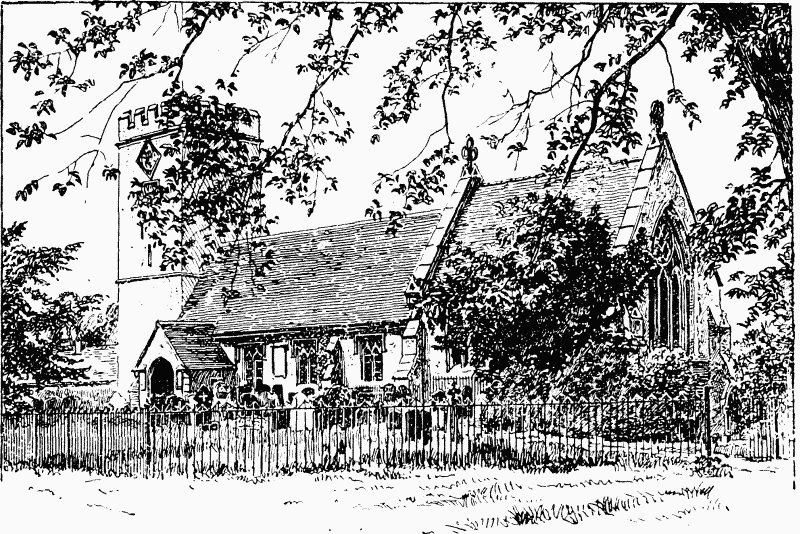
Milton Church From The South-East
Milton village, 4 miles south-west of Abingdon, is situated in country gradually sloping upwards from about 180 ft. above the ordnance datum in the Thomas Valley on the north to over 300 ft. at Milton Hill in the south. The village is built on Potash Lane leading north from the Newbury and Abingdon road. That lane forms the village street, at the north end of which is the church. The Lion Inn, near the church, was a gabled house of brick and timber, but has been rebuilt (fn. 14); it seems probable that the old house was 'The Dogg Inne,' which belonged to the manor in 1697. (fn. 15)
In the garden of the rectory is the octagonal bowl and stem of a font probably of 14th-century date and now transformed into a sundial. An outbuilding incorporates the heads of two four-centred 15th century windows and a square-headed cinquefoiled window probably from the old church.
Milton House, west of the church, is ascribed with some probability to Inigo Jones. It is a brick building with cement dressings. The original house consisted of a square block three stories high, with a main cornice and entablature supported on flat Ionic pilasters with festooned capitals of stone, and bands enriched with fleurs de lis at half the height of the firstfloor windows. Between the two lower floors runs a moulded cornice. The windows are plain and squareheaded, those on the first floor having cornices over. The front entrance is of the 18th century. The rear elevation is a replica of the front, and the sides were similarly finished, but are now concealed by wings added in 1776 with semi-octagonal terminations at the back. The main roof is hipped and slated. The centre part of the ground floor is occupied by the hall with the dining room and staircase at the back and the drawing room on the south. The hall has two square Doric piers supporting semicircular arches and forming a type of screen at the south end. The fireplace has carved consoles at the sides. The drawing room has a plaster ceiling divided into squares with circles of oak and bay leaf. The marble 18th-century fireplace is of French character, with a wooden overmantel containing a 17th-century painted group of children. (fn. 16) The walls are panelled to the ceiling, and the doors have an oak-leaf frieze. The dining room is also panelled and has an 18th-century wooden fireplace with a seascape in the panel. The great staircase is a fine example of 17th-century work, with a broad well, turned balusters and massive square panelled newels; it is continued up to the attics. The centre front bedroom on the second floor has a fine carved fireplace with festoons of fruit and flowers, and an overmantel with Ionic pilasters and two female figures with cornucopias on the cornice. The chapel was built by John Briant Barrett, a devout Roman Catholic and the friend of Bishop Richard Challoner. (fn. 17) It is in the south wing, and is of little interest, except for the fine stained glass in the windows. In the apse are two windows, said to have come from Steventon Church, and including and Annunciation, the Virgin, our Lord, the Resurrection, &c. The three side windows are filled with foreign glass, probably Flemish. The subjects are taken from the life of St. Julien, and there are six panels in the first window and four in the third; the second window has a large subject—the Incredulity of St. Thomas.
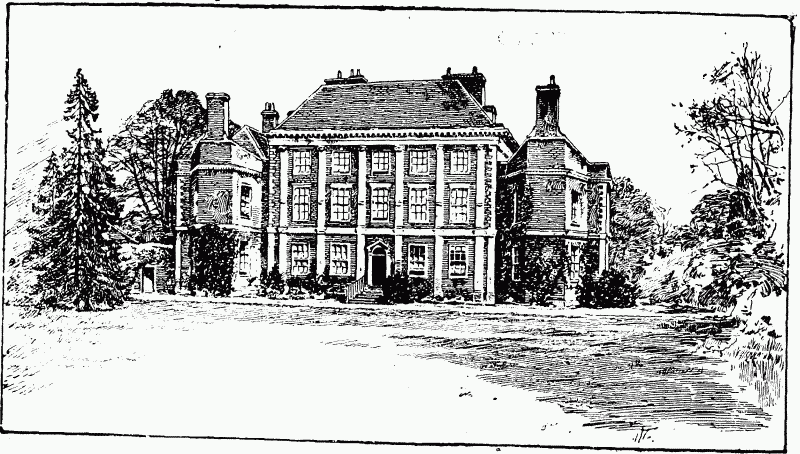
Milton House: The Garden Front
In 1696 the house was described as newly built. (fn. 18) Peter the Great is said to have stayed here, (fn. 19) ap parently in 1697–8, probably in order to consult Vice-Admiral John Benbow, who lived at the Dower House, (fn. 20) on shipbuilding. William III is said to have been brought to the house after a hunting accident in the neighbourhood. (fn. 21) Near the site of the Dower House is the Stock Stone, a large sarsen; here the stocks stood within living memory. (fn. 22)
Potash Lane joins the high road on Milton Hill.
In 1691 it was stated that the road from Newbury to Abingdon was an ancient pack and prime way, being a hollow way where carts could not pass, and having great stones marking its course until removed during the Civil War. The cart track lay by way of Steventon, but the inhabitants of Milton used a carttrack to the west of the pack-way. A hedge was planted on the west side of this old way about 1650, the arable lands of the lord of the manor lying open until that time. (fn. 23) The Portway, the name given to the high road from Wallingford to Wantage, which crosses the southern part of the parish, was so known in 1798. (fn. 24) Heath Farm here was purchased about 1770 by Thomas Bowles of Abingdon, who inclosed a park and built Milton Hill House; both were enlarged by his son Thomas (d. 1837) and his grandson John Samuel. (fn. 25) The latter was Sheriff of Berkshire in 1852 (fn. 26) and died in 1884. His eldest son, Col. Thomas John Bowles, (fn. 27) sold the estate in 1905 to Mr. Panizzi Preston, J.P., (fn. 28) of Landford Manor, Salisbury; he resold it in 1912 to Mr. A. Mortimer Singer, the present owner. (fn. 29) Milton Hill House stands in a park of 70 acres and contains some fine old oak carving arranged in a library which was designed by Sir George Gilbert Scott.
The Rev. James George Warner, the rector, founded in 1796 the Church of England elementary school, which has since been enlarged. The only Nonconformist chapel in the parish is a temporary building of iron. In 1676 no Roman Catholics and but two Separatists were found among the seventy-five inhabitants of the parish. (fn. 30)
Roman and Saxon objects have been found in the parish. (fn. 31)
At Christmas time mummers act a traditional play. (fn. 32)
Seventeenth-century field-names still found are Beane (now Bin) Meadow and Nyett (now Noyates). (fn. 33) Among present field-names are Blacklands, Crawt or Crart, Down Hays, Flax Lands, the Fleet, Howbrook, the Severalls, and the Vista or Vistal. Abele Shaw is on the north slope of Milton Hill. The California allotments were formed at the time of the discovery of the California gold-fields. (fn. 34)
Manor
In 956 King Edwy granted 15 hides of land in MILTON to his thegn Alfwin, who gave the same to Abingdon Abbey. (fn. 35) King Edgar, afterwards stated to be the donor, (fn. 36) perhaps confirmed the manor to the abbey. In 1086 the abbey still held it. Fees of 2 hides and 3 hides in this manor were held by the abbot's men Azelin and Rainald. (fn. 37) Pope Eugenius III confirmed Milton to the abbey in 1146 and 1152. (fn. 38)
One hide of land here was given to the abbey in the time of Henry I by William son of the Abbot Reynold. (fn. 39) It was wrongfully obtained among other lands (fn. 40) by Simon, dispenser of Henry I, and his son Turstin, but was surrendered by Simon and restored to the abbey by Henry II. (fn. 41) The abbey held the manor until its surrender in 1538. (fn. 42)
Henry VIII in 1546 granted this property with other Berkshire lordships in exchange to Lord Chancellor Wriothesley, (fn. 43) who in the same year sold the manor and advowson of the rectory to Thomas Calton, goldsmith of London, and Margaret his wife. (fn. 44) Margaret widow of Thomas died seised in August, 1571, leaving a grandson and heir Thomas, aged eight, son of their son William. (fn. 45) This grandson was succeeded in 1587 by his infant son Paul, (fn. 46) who died childless in 1637, when his paternal aunt Margaret, wife of Richard Westley, was heir. (fn. 47) In this year, however, Paul had settled the manor on his kinsman Robert Calton of Goring, Oxfordshire, with various contingent remainders. (fn. 48)
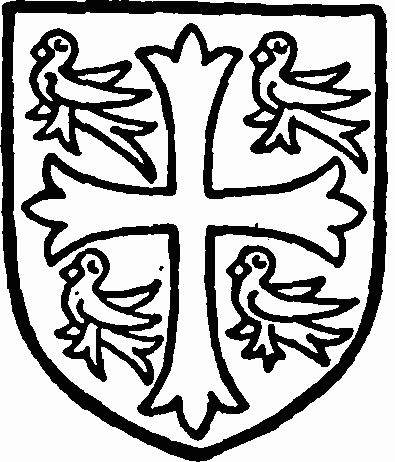
Abingdon Abbey. Argent a cross paty between four martlets sable.
In the spring of 1639 the manor was the subject of a settlement by Robert Calton of Goring and his son Robert and by Richard Westley and Margaret his wife. (fn. 49) In 1664 it was again settled on Paul son of the younger Robert Calton, (fn. 50) and Paul in 1688 conveyed it to his only son Paul, (fn. 51) suing him afterwards for refusing to maintain him and his wife and daughter, the younger Paul's mother and sister, and for depreciation of the property. (fn. 52) Paul son of the younger Paul married in 1709 Catherine daughter of ViceAdmiral John Benbow and spun round his father-inlaw the romance which still makes that commander's history obscure. (fn. 53) In 1723–5 Paul Calton and Elizabeth his wife mortgaged the manor to William Benbow and Benjamin Fuller. (fn. 54) Paul was again concerned with the manor in 1746, (fn. 55) and in 1764 Catherine, Martha and Mary Calton, spinsters, sold it to Isaac Barrett. (fn. 56) Isaac was probably acting as a trustee for John Briant Barrett, said to be the purchaser. (fn. 57) His son and heir John Richard (fn. 58) made a settlement in 1802. (fn. 59) He was succeeded in 1843 by his son John Basil Barrett, on whose death in 1886 the estate passed to his son Louis Arthur Barrett, now of Milton House. (fn. 60)
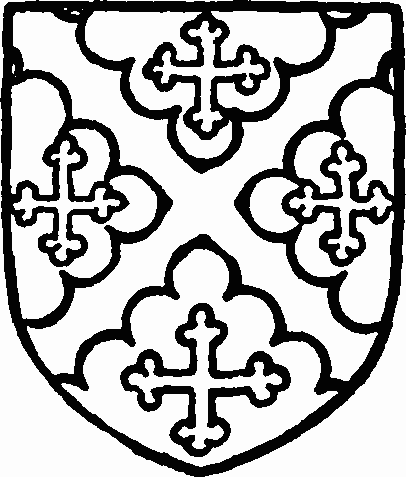
Calton. Sable a saltire engrailed between four crosslets or.
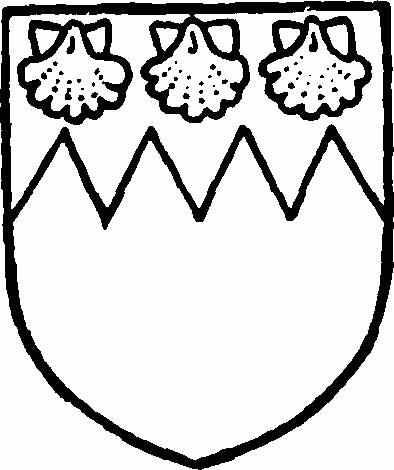
Barrett. Gules a chief indented argent with three scallops gules therein.
Church
The church of ST. BLAISE consists of a chancel with north chapel, nave with north aisle, south porch and west tower. With the exception of the tower, south porch and the western part of the nave, the building is entirely modern.
The ancient part of the nave, the porch and the lower stage of the tower are probably all of the 14th century. The upper part of the tower is a later addition or rebuilding, and the tower arch was inserted in the 18th century. At the rebuilding one bay was added on the east of the nave and the chancel moved further east.
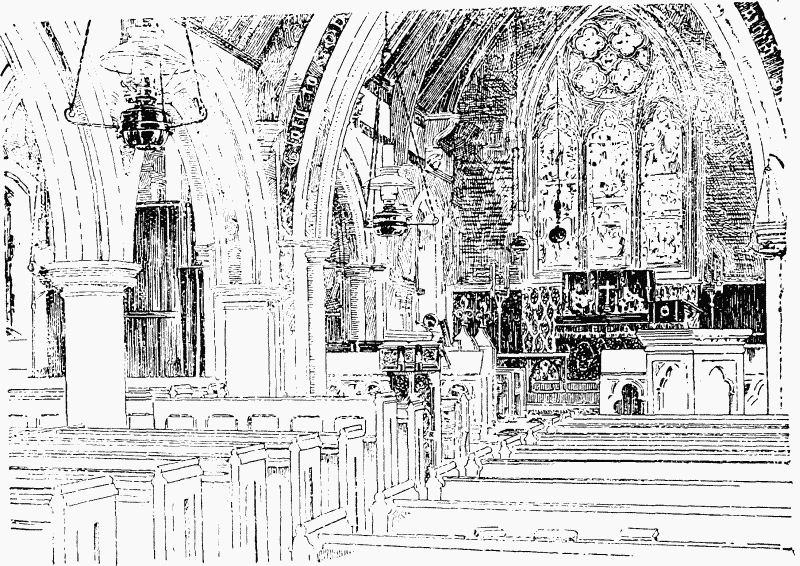
Milton Church: The Nave, showing Arcade and Chancel Arch
The modern chancel is in the style of the 14th century. Under the chancel arch is the Barrett family vault in which is buried Dr. Richard Challoner (d. 1781), author of many devotional works and a version of the Douai Bible, who is described in the register as 'a Popish Priest and Titular Bishop of London and Salisbury a very pious and good man, of great learning and extensive abilities. 'The nave has a modern north aisle of four bays in the 'Decorated' style. Two-thirds of the south wall are ancient, but the three windows on this side are modern. The roof of the old part of the nave is of wagon form and is ceiled. The west tower is three stages high and is finished with an embattled parapet. The 18th-century tower arch is semicircular with a keystone. The 14th-century west window is of two lights and the west doorway below it is of the 18th century. The second stage is lighted by loop lights and the bell-chamber by two-light square-headed windows of late date. The south porch has a pointed and restored outer archway and a roof of stone slabs open to the ridge and supported by a pointed stone arch in the centre, pierced in the gable.
In the vestry are some fragments of Flemish glass, including a head of the Virgin, a male head, a small figure in a mitre and a merchant's mark for Peeter Crafsbeeg.
There are six bells: the treble is inscribed 'Ffrancis Yateman Robert Keate C. W. 1682'; the second 'Richard Keene cast this ringe 1682'; the third is of 1787; the fourth and fifth of 1682, and the tenor by Mears & Stainbank, 1906.
The plate includes a plate (London, 1697) with the arms of Benbow, Sable two bent bows back to back between two bundles of arrows or with their barbs and heads argent and tied with gules, and for crest a harpy; a cup (London, 1765), silver gilt and inscribed 'Milton Berks 1766'; a paten presented in 1851; and a flagon presented in 1875.
The registers previous to 1812 are as follows: (i) baptisms 1654 to 1723, marriages 1662 to 1723, and burials 1662 to 1723; (ii) all entries 1723 to 1812, marriages to 1756 only; (iii) marriages 1756 to 1812.
Advowson
Abingdon Abbey in the reign of William II granted to Alwi, priest of Sutton Courtenay, that his son should succeed him in that church, but reserved the chapel of Milton. (fn. 61) Simon the Dispenser wrongfully seized the chapel during the reign of Henry I, but restored it. (fn. 62) The chapel became a parish church and the advowson descended with the manor until the 17th century, (fn. 63) when its ownership became a matter of dispute, from what cause does not now appear. The Caltons claimed it until the close of that century, (fn. 64) but Robert Sawyer presented in 1625, the Crown in 1660, Paul Calton and Thomas Holt in 1672, and when in 1679 Paul Calton presented the Crown made a counter-presentation. (fn. 65) Sir Thomas Abney, bart., gave the living in 1744 to James Warner, (fn. 66) whose son James George (fn. 67) was presented by the Earl of Marchmont in 1780, (fn. 68) but the Rev James George Warner stated in 1798 that his father had purchased the advowson from the Calton family. (fn. 69) In 1790 the advowson was vested by the Rev. James George Warner in the Dean of Christ Church and the regius professors of Divinity and of Hebrew at Oxford, the present patrons. (fn. 70)
An image of St. Blaise stood in the chancel in 1506, (fn. 71) and lands were appropriated for finding a lamp in the church. (fn. 72)
Charities
Eleemosynary charities.—In 1641 Richard Curtyn by his will gave 10s. yearly out of his lands in Oakley (Bucks.) and in Sutton Wick for distribution to the poor at Christmas Eve. The annuity is paid by the governors of Christ's Hospital.
The poor's money now consists of £32 4s. 6d. India 3 per cent. stock with the official trustees; this includes a gift of £20 by Miss Catherine Calton; the dividend, amounting to 19s. 4d. yearly, is applied with Curlyn's charity in money doles at Christmas. The poor are also entitled to a rentcharge of 1s. 2d. charged upon Rogerson's Lot Mead, otherwise the Hospital Farm.
In 1772 the Rev. Matthew Eaton, by his will proved in the P.C.C. 17 March, directed his trustees to apply the interest of his residuary estate to placing out poor children belonging to the parishes of Milton, Hagbourne and Harwell as apprentices, and in relief of widows and industrious poor of those parishes. This charity was in 1822 the subject of proceedings in Chancery, and the trust fund, amounting to £3,180 consols, producing £79 10s. yearly, is still in court. The third part of the income, amounting to £26 10s., belonging to this parish is applied in aid of the coal and clothing club, of the children's shoe club and in the distribution of money.
The educational charity of the Rev. James George Warner, founded by will proved in the P.C.C. 5 December 1803, is endowed with a sum of £2,260 8s. 6d. India 3 per cent. stock with the official trustees, producing £67 16s. 3d. yearly, which, subject to the annual payment of £1 1s. 6d. for keeping in repair the monument to the Warner family in the church, is applied for the benefit of the Church of England school which was built in 1796 and enlarged in or about 1840 and again in 1904.
The church lands, allotted to the churchwardens by the Inclosure Award, contain 1 a. 2 r. 6 p., which is let in allotments, producing about £4 a year. The sum of £1 10s. is paid to the rector and the residue applied in aid of the church funds.
